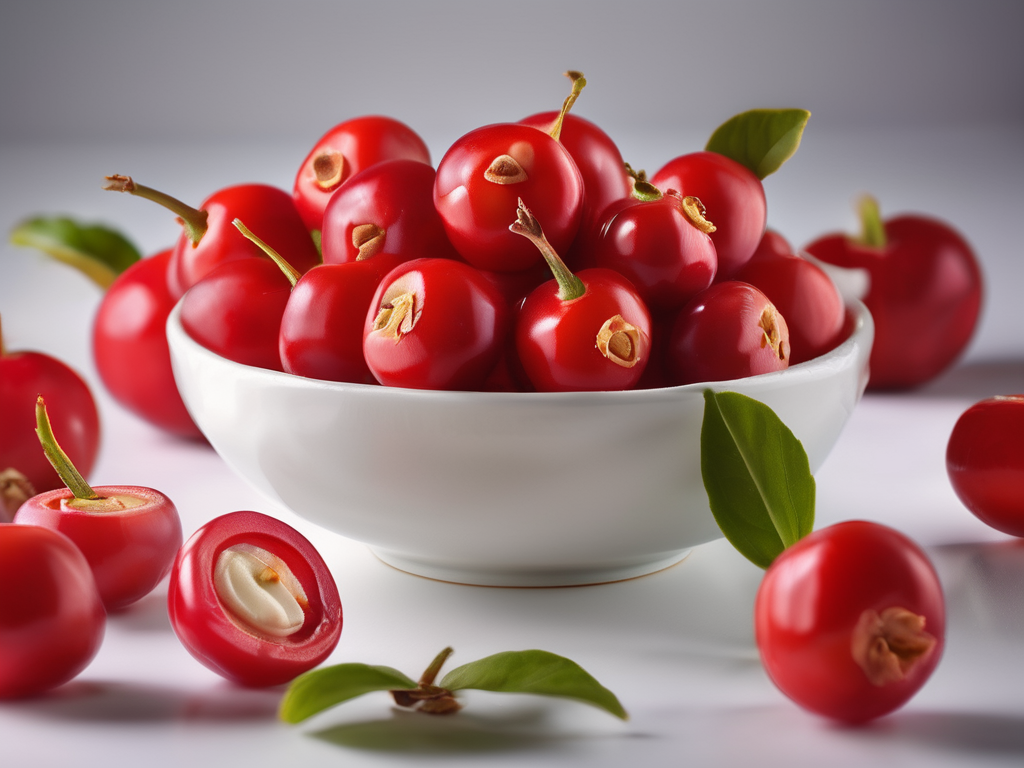
How to Store Acerola to Keep it Fresh Longer
Get Your Free Food Safety Cheat Sheet
30 most common foods with instant answers. Print it and stick it on your fridge—completely free!
How to Store Acerola to Keep it Fresh Longer
Acerola, also known as the Barbados cherry, is a superfood packed with vitamin C and antioxidants. It's a popular ingredient in smoothies, juices, and supplements due to its numerous health benefits. To ensure you get the most out of your acerola and keep it fresh for longer, proper storage is key. In this blog post, we will discuss the best practices for storing acerola to maintain its freshness and nutritional value. (Acerola)
Understanding Acerola Storage Needs
Before diving into storage tips, it's essential to understand the characteristics of acerola that influence its storage requirements. Acerola is a delicate fruit that is highly perishable due to its high water content and vulnerability to temperature and humidity fluctuations. To extend the shelf life of acerola and preserve its nutrients, proper storage conditions are crucial.
Factors Affecting Acerola Shelf Life
- Temperature: Acerola is sensitive to temperature variations and should be stored at the optimal temperature to prevent spoilage.
- Humidity: Excessive moisture can lead to mold growth, while low humidity can cause dehydration of the fruit.
- Light: Exposure to light can accelerate the deterioration of acerola, leading to nutrient loss and flavor changes.
- Air Circulation: Proper air circulation is essential to prevent moisture buildup and maintain the freshness of acerola.
Tips for Storing Acerola
Now that we understand the factors that impact acerola's shelf life, let's explore practical tips for storing acerola to keep it fresh longer.
1. Choose Ripe and Firm Acerola
- Select acerola fruits that are ripe but firm to the touch.
- Avoid fruits that are overly soft or have blemishes, as they are more likely to spoil quickly.
2. Store Acerola in the Refrigerator
- Place acerola in a perforated plastic bag or airtight container.
- Store in the refrigerator at temperatures between 32°F to 40°F (0°C to 4.4°C) to slow down the ripening process and extend shelf life.
3. Avoid Moisture Buildup
- Line the storage container with a paper towel to absorb excess moisture.
- Check the container regularly and remove any spoiled acerola to prevent the spread of mold.
4. Freeze for Long-Term Storage
- Wash and pat dry the acerola before freezing.
- Place the fruit in a freezer-safe bag or container, removing excess air before sealing.
- Label the container with the date and store in the freezer for up to 6 months.
5. Use Frozen Acerola in Recipes
- Frozen acerola can be used in smoothies, sauces, and desserts.
- Thaw the fruit in the refrigerator or at room temperature before incorporating it into your recipes.
Conclusion
Proper storage is essential to maintain the freshness and nutritional value of acerola. By following these storage tips, you can enjoy the benefits of this superfood for longer periods. Remember to check your acerola regularly for any signs of spoilage and discard any fruits that show mold or unusual discoloration. With the right storage practices, you can make the most of your acerola and elevate your culinary creations with its vibrant flavor and health benefits. (Acerola)
Authoritative Food Safety References
These agencies and university labs inform every tip and health precaution we publish.
USDA FoodKeeper – Cold Storage Guidelines
Official refrigerator, freezer, and pantry timelines maintained by the U.S. Department of Agriculture.
Visit USDA FoodKeeperFDA Produce Safety Rule & Grower Guidance
Field-to-fridge handling practices that prevent contamination of fruits, vegetables, and leafy greens.
Visit FDA Produce SafetyCDC Foodborne Illness Prevention Hub
Surveillance-backed guidance on pathogens, symptoms, and steps to reduce foodborne illness risk.
Visit CDC Food SafetyUC Davis Postharvest Technology Center
University research detailing optimal storage atmospheres for produce after harvest.
Visit UC Davis PostharvestPenn State Extension – Home Food Preservation & Safety
Peer-reviewed extension bulletins on safe canning, chilling, and reheating practices.
Visit Penn State ExtensionGet Your Free Food Safety Cheat Sheet
30 most common foods with instant answers. Print it and stick it on your fridge—completely free! Want more? Upgrade to the complete guide with 70+ foods.
Scan your food directly and get instant safety info using our AI-powered camera feature.